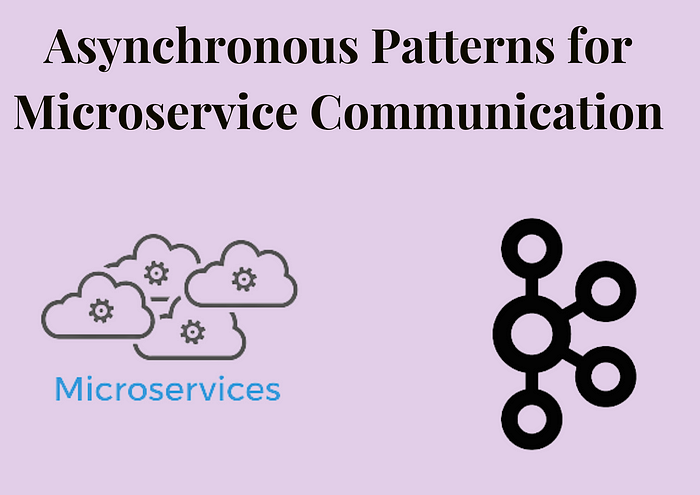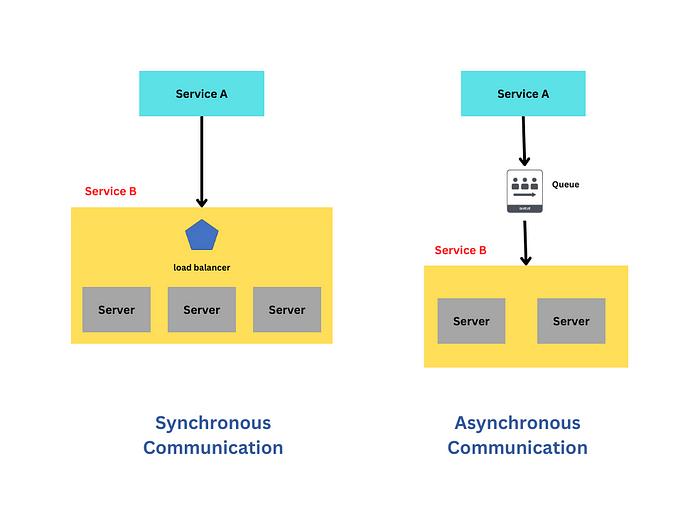

Asynchronous Patterns for Microservice Communication
source link: https://blog.bitsrc.io/asynchronous-patterns-for-microservice-communication-edd6722a7323
Go to the source link to view the article. You can view the picture content, updated content and better typesetting reading experience. If the link is broken, please click the button below to view the snapshot at that time.
Asynchronous Patterns for Microservice Communication
Uses of Asynchronous Patterns in Microservice Communication

Have you ever found microservice communication challenging due to its distributed nature? If so, you’re not alone. Microservices have become increasingly popular in modern software development due to their flexibility, scalability, and maintainability. However, as with any distributed system, communication between microservices can be complex and error-prone. In particular, choosing between synchronous and asynchronous communication can be difficult.
This article will explore asynchronous patterns for microservice communication and how they can help simplify and streamline your microservice architecture.
What are Asynchronous Patterns in Microservices?
Microservice communication can be categorized as either synchronous or asynchronous. With synchronous communication, the caller sends a message and waits for a response from the recipient. This approach is useful when the caller needs a reaction, such as during login or purchase.
In contrast, asynchronous communication allows the caller to continue running their code without waiting for a response. This is often preferred when the caller does not need an immediate response, such as when altering settings. Developers can choose the appropriate method for their microservice architecture by understanding the differences between synchronous and asynchronous communication.

Since Microservices communicate using Asynchronous methods, keeping their patterns fast and responsive is essential. Fortunately, there are several quick ways to do this. For example, having your services communicate asynchronously with RabbitMQ or Kestrel is a good idea before Synchronous methods. This way, you can maximize network efficiency while minimizing response delays. You can also use Kestrel’s retries for excellent reliability and scalability when communicating between machines. In addition, it’s a good idea to use event-driven communication for better responsiveness between your components and clients.
If you want to connect with multiple microservices without creating dependencies or tightly coupling them, consider using asynchronous message-based communication in your microservices architecture. This approach leverages events to facilitate communication between microservices, which is commonly referred to as event-driven communication. By using events, microservices can communicate with each other in a loosely-coupled manner without being directly tied to one another. Asynchronous message-based communication provides a flexible and scalable approach to microservice architecture, making it a popular choice among developers.
This means that if any changes occur in the domains of the microservices, they are propagated across the microservices as an event, which the microservices’ subscribers then consume. We achieve “eventual consistency” thanks to event-driven communication and Asynchronous messaging.
As a summary for Asynchronous communication, we can consider that the client microservice sends a message or event to the broker systems without waiting for a response. Since it is aware that this is a message-based communication, it will wait to answer. Some data may include in a message or event. And across message broker systems like Kafka and Rabbitmq, these messages are transmitted using asynchronous protocols like AMQP.
Advantages of Asynchronous Patterns
Let’s discuss some of the advantages of Asynchronous patterns for Microservice communication.
Scalability
Imagine we are sending multiple requests for report production, which can take considerable time to process. If the report creation service is under heavy load, putting it in front of a load balancer can only do so much. Each autoscaling group has a maximum number of instances and a warmup period, which can limit its ability to respond to unexpected spikes in traffic.
However, the scalability is virtually unlimited if we use an asynchronous message-based communication approach. While processing every request may take some time, we can be confident it will eventually be completed. By utilizing this approach, we can ensure that our microservices architecture can handle high traffic and remain responsive to user requests.
Reliability
Another advantage of asynchronous communication is reliability. With synchronous communication, if our service goes down or there is a network problem, the communication will be lost after a specific timeout. However, network issues are common. In contrast, asynchronous communication will process all messages, even if the service goes offline for maintenance. Messages that cannot be processed will be stored in the dead letter queue and can be inspected and replayed as needed. This ensures that messages are not lost and that our microservices architecture remains reliable despite network issues or service downtime.
We can prioritize requests when we use queues, which is a different priority that can prioritize later if the same service handles both products and prioritize buy bids. If the service is heavily loaded, we can serve the product views slowly, even not at all.
Testability
By using queues, testing individual microservices requires adding messages to the queue and ensuring that the consuming service behaves as intended. Consumer-driven contract testing is what this is. It’s optional to set up the entire service mesh before testing. Instead, we only require the service being tested, a queue, and a message generator. This makes it simple for us to locate and find bugs.
Additionally, it makes testing easier and enables us to input many different permutations of messages, allowing us to test the service in various circumstances.
Disadvantages of Asynchronous Patterns
Asynchronous patterns do increase complexity. We have to send a message, listen to a reply queue, and route the message to the sending client based on a message ID rather than sending a message and waiting for a reply. The good news is that many message brokers support this pattern because it is so widespread. This is an example of how to do it using the code provided in several languages in the RabbitMQ manual.
The other disadvantage is that we must necessarily add latency in the Microservice because we employ asynchronous communication and build a queue between components. We are adding two hops on each side in place of direct communication. These sides can define as service to queue and queue to the receiving service. The good news is that the latency can be low if you choose the proper queue. For instance, this benchmark has a RabbitMQ latency of O (1 ms).
Conclusion
In conclusion, effective communication between microservices is vital for building modern applications. Asynchronous communication methods have emerged as the standard due to their efficiency and scalability when handling high volumes of requests.
However, it is crucial to understand when and how to use them appropriately, as they also have drawbacks. With the right implementation, microservice communication patterns can ensure reliable and responsive applications that can handle high traffic and remain scalable. Keeping up with the latest trends and best practices in microservice communication can help organizations stay ahead in today’s technological world and meet the evolving needs of their customers.
💡 You can ensure reliability and scalability in your microservices architecture by using component-based software engineering with Bit.
For reference, check out this guide:
Recommend
About Joyk
Aggregate valuable and interesting links.
Joyk means Joy of geeK